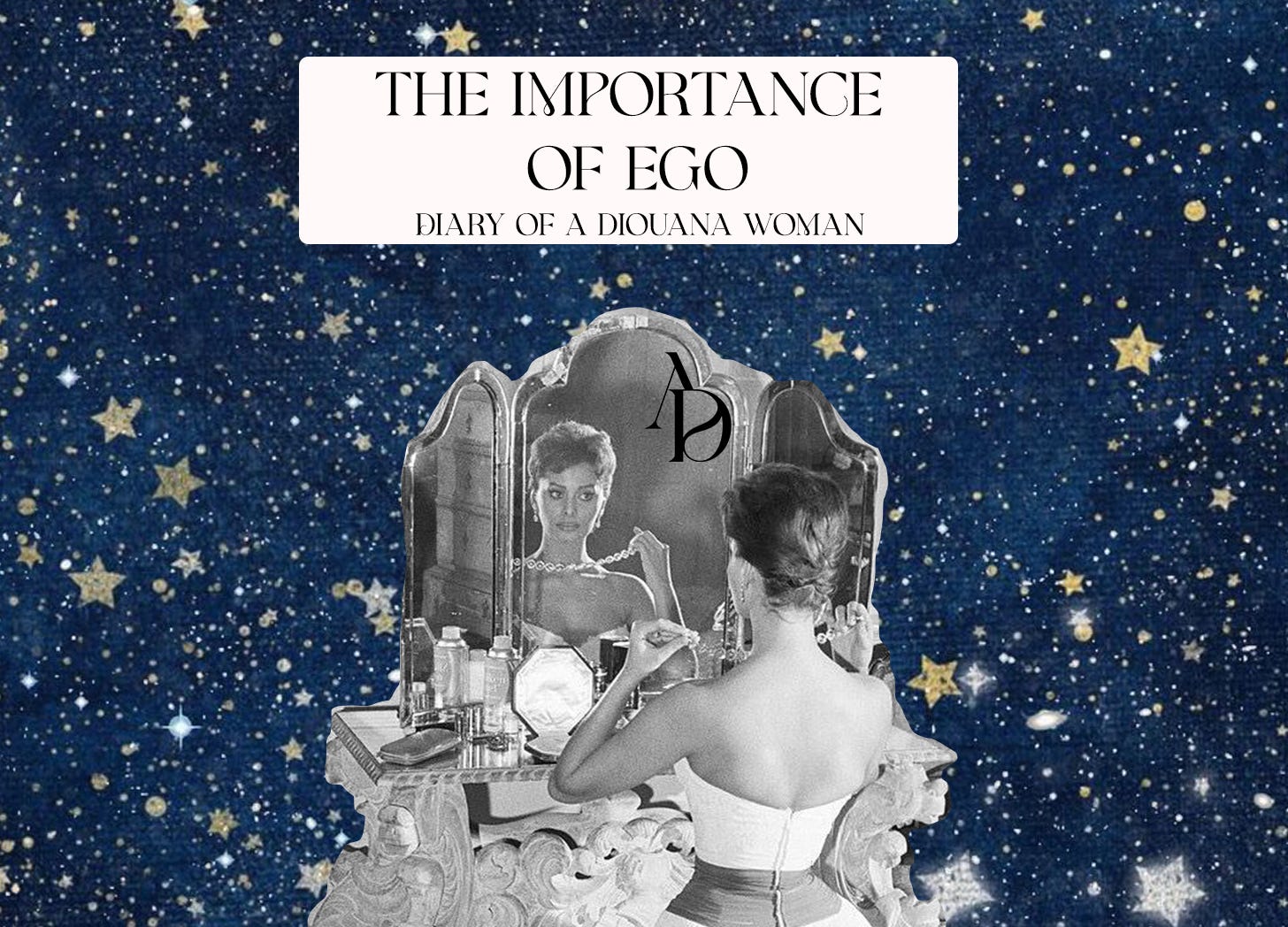freud spoke of ego as a set of ideas. as a diouana woman, i speak of ego as a necessity.
to be clear, let us not confuse ego with narcissism. one is a personality disorder and the other an “organizing principle upon which thoughts and interpretations of the world are based.”1 with this in mind, let us move forward with the understanding of ego as our dominant ideas of the world, as experienced through our individual reality.
as i come from a familial culture outside of the western world, my mind has always been opened to spirituality and mysticism. i always joke that the only regret i have from college is that i did not concentrate in folklore and mythology. after all, ours is a world of stories which are largely based on myths. oral history predates written record, and we live now in societies run by companies and individuals who have mastered the art of storytelling. the way in which one can capture the hearts and minds of thousands, if not millions. we see this with the complete raise and domaine of social media as the center of all creative in marketing.
it’s long been established that there are five key elements to every story: plot, setting, characters, point of view, and conflict. ego can be placed squarely in the category of point of view. this is why, as diouana women, it’s imperative we have ego; for this is our point of view. our perspective on ourselves. freud wrote of ego:
“… in each individual there is a coherent organization of mental processes; and we call this his ego. It is to this ego that consciousness is attached; the ego controls the approaches to motility… it is the mental agency which supervises all its own constituent processes….”
freud. source.
the trouble with not tending to our ego is that someone else will. it’s that old adage of “if you do not have a plan, one will be given to you.” as ours is a culture now ruled by aglos (a diouana woman’s shorthand for “algorithm”), it’s often our phones shaping our ego. the aglo informs us on what to buy, what to watch, who to follow, where to travel, etcetera. in this curation of likes and hearts, our ego is being shaped by the distance, either real or perceived, by what we have and what we should have.
as women who make our own luck, we can close this gap anytime we want. one option is to buy that dress, binge that series, follow that creator, book that ticket and enjoy the euphoria of desires quickly satiated. the other option is one that goes straight to the heart—right into the belly of the beast—to tackle the ego from within by deciding, for ourselves, what our ego is.
there’s a stance a diouana woman takes in deciding who she is, and who she will become in this life. a depth of character that comes with knowing exactly who, what, how, and why you are. a feeling of peace that comes with understanding that identity has no meaning expect for context because essence shall always remain. if i woke up tomorrow in 19th century france as joséphine bonaparte, fresh from her wedding to napoleon, or found myself a century early in russia as catherine the great, fresh from her coronation, i’d still be a diouana woman. whether queen consort or sovereign, once a diouana woman, always a diouana woman.
i am beginning a new section in my nightly posts titled truth or dare. it’s a simple curated list of ideas and items i’ve engaged with today that i loved and am sharing with you as a truth because they were 10/10. the dares are what wasn’t so great, so it’s me saying don’t do it. but only if you dare. get it? great. let’s begin:
truth or dare
truth:
the philosophy of film noir. i just checked this book out from the library, and it reminds me of another book i recently finished titled complicated women that i absolutely loved. both are great reads.
late bloomers: the power of patience in a world obbsessed with early achievement. the title says it all. i also checked this book out from the library.
a vintage purple silk robe. the perfect companion when you’re writing about women for women.
dare:
i have no dares for tonight!
Snowden, Ruth (2006). Teach Yourself Freud. McGraw-Hill. pp. 105–107.





